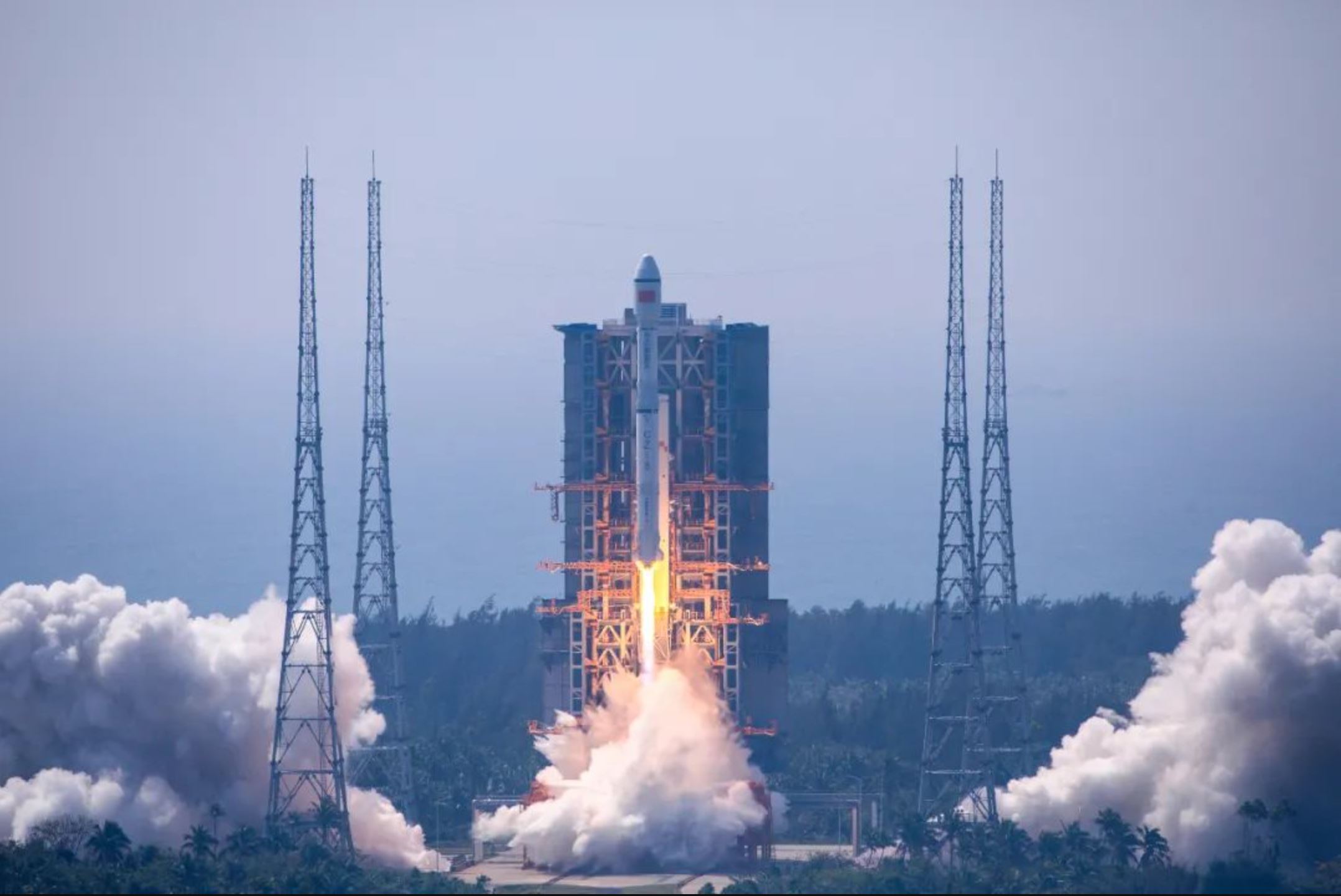Products You May Like
HELSINKI — China’s second Long March 8 rocket launched late Saturday carrying a domestic record 22 satellites for a range of commercial Chinese space companies.
The Long March 8 lifted off from Wenchang Satellite Launch Center at 10:06 p.m. Eastern Feb. 26, with the China Aerospace Science and Technology Corporation (CASC) later confirming launch success.
The second Long March 8 flew without the pair of side boosters used in the rocket’s first mission back in December 2020. It has a length of 50.3 meters long and a mass at takeoff of 356 tons.
The Long March 8 has been slated for test development of vertical takeoff, vertical landing, during which side boosters would remain attached to the first stage. Saturday’s mission was expendable, launching over the sea from Hainan island.
The Long March 8 combines the 3.35-meter-diameter new-generation Long March 7 kerosene-liquid oxygen first stage with a 3-meter-diameter hydrolox second stage from the older Long March 3A series.
“To put it simply, we have hammered out a ‘carpooling’ solution to launch many small satellites in one successful launch mission,” Xiao Yun, chief commander of the Long March 8 rocket program, told CCTV.
The China Great Wall Industry Corporation (CGWIC), a subsidiary of CASC, launched the first “Long March Express” rideshare using a Long March 6 in April 2021. A number of contracts for the new rideshare were signed at the Zhuhai Airshow in late September.
The payloads on the Long March 8 involved seven manufacturers with end users including seven commercial companies and two research institutes.
Changguang Satellite Technology, a Changchun-based remote sensing constellation operator and spinoff from the Chinese Academy of Sciences’ CIOMP, launched 10 new Jilin-1 satellites for its constellation of remote sensing satellites of the same name.
These were the Jilin-1 GF03D10-18 satellites, with GF standing for “Gaofen” or high resolution, with each of the eight satellites having a mass of around 43 kilograms. Jilin-1 MF02A01 is a 32-kilogram multi-functional satellite to test a new platform. A number of the satellites also carry secondary names through sponsorships.
Small satellite maker Minospace manufactured five satellites aboard the mission. Two of these were the Taijing-3 (01) 240-kilogram optical and Taijing-4 (01) 250-kilogram synthetic aperture radar (SAR) satellites which will be operated by Minospace.
The firm also made the Wenchang-1 (01) and (02) wide-field multispectral satellites for the Sanya Institute of Remote Sensing and Hainan Westar Remote Sensing Technology Application Service respectively, each with a mass of 62.5 kilograms. The Xidian-1 hyperspectral remote sensing satellite is for the new Silk Road Tiantu constellation and operated by Shaanxi Silk Road Tiantu Satellite Technology.
Changsha-based commercial spacecraft maker and constellation operator Spacety launched the Chaohu-1 satellite, the first of the planned Tianxian SAR constellation in cooperation with the China Electronics Technology Group (CETC). The 325-kilogram satellite builds on the Hisea-1 SAR satellite launched on the previous Long March 8 flight.
Spacety also had the 14-kilogram Thor Smart Satellite on the mission. The satellite carries a distributed software protocol test payloads and three GRID gamma ray burst detectors and the Aurora-2 X-ray polarimeter.
Tianqi-19 was manufactured by Shandong Institute of Aerospace Electronics Technology for Guodian Gaoke and its Tianqi low-Earth orbit narrow-band Internet of Things constellation.
The roughly 60-kilogram Hainan-1 (01) and (02) satellites were developed by Shenzhen Aerospace Dongfanghong Satellite, ultimately under the ownership of CASC, for Hainan Westar Remote Sensing Technology Application Service. The satellites carry imagers and automatic identification system (AIS) receivers for maritime surveillance.
Star Era-17 (Xingshidai-17), also referred to as “Dayun”, the Chinese name for the Universiade international sports event to be held this year in Chengdu, is a 20-kilogram satellite carrying visible light and thermal infrared imagers and “AI payloads” developed and operated by ADA Space, based in Chengdu, capital of Sichuan province, southwest China. The firm raised $55.6 million in Series B round late last year for its AI satellite constellation plans.
Finally, the Phospherus-1 22-kilogram optical satellite was developed by Wuhan University for hyperspectral imaging.
Earlier on Saturday China launched the L-SAR 01B satellite on a Long March 4C, sending the synthetic aperture radar satellite to operate in formation with the L-SAR 01A satellite launched in January.
The hypergolic rocket lifted off from Jiuquan Satellite Launch Center at 6:44 p.m. Eastern Feb. 26, CASC confirmed.
The launches were China’s third and fourth orbital missions of 2022 and the first following an extended break for the Lunar New Year celebrations.
Main space contractor CASC is planning to launch more than 50 times this year, with a number of commercial companies also planning to launch a range of liquid and solid rockets.
China set a new domestic record of 55 launches in 2021, far surpassing the previous record of 39 launches conducted by China in 2018 and 2020.
